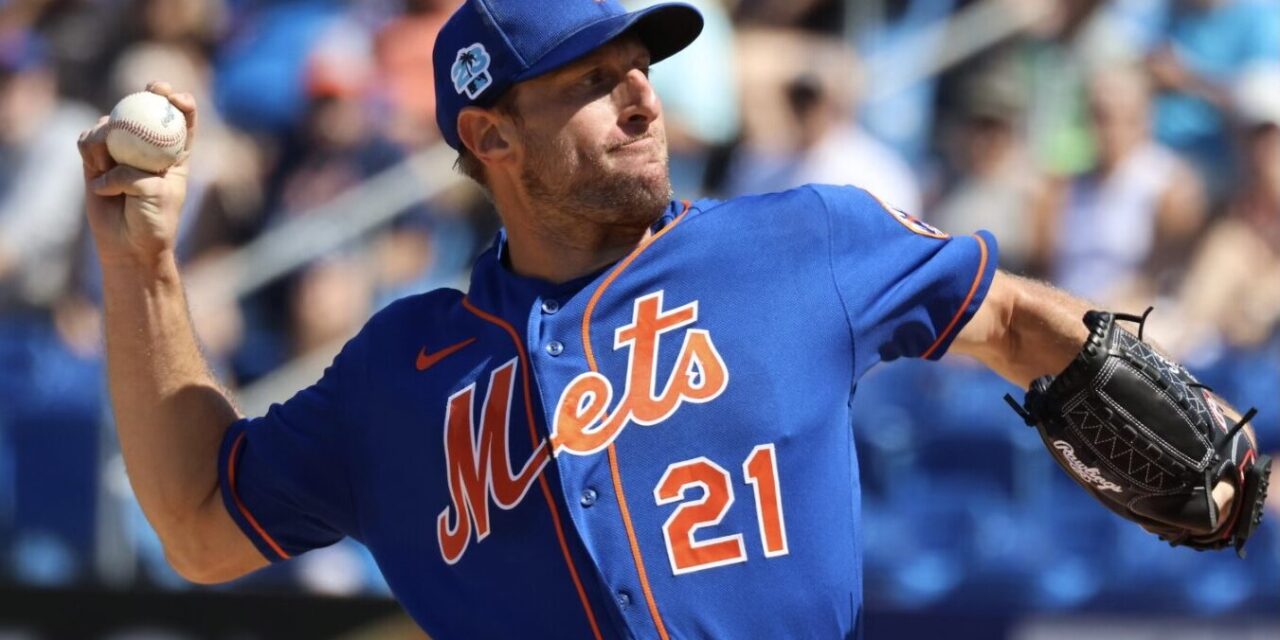
Photo by Ed Delany of Metsmerized
We are a little over two weeks into Grapefruit and Cactus League action, as Major League Baseball prepares for an historic season. Historic in the sense that every team will play every other team, and several new rules will be implemented. The objectives are to speed up the games and add more offense, and in particular, more in-play action. It’s only natural to ask the question, “so, how’s it all going?”
The Pitch Clock
MLB wants to shorten games, but not just shorten them, do so by eliminating “dead air.” That would be the time when batters step out of the box to adjust their batting gloves, and pitchers stretch and adjust their belt buckles on the mound. As a reminder, the pitch clock applies to both the pitcher and hitter, as the pitcher has 15 seconds to begin his motion with no runners on base and 20 seconds to do so with runners on base. The batter must be “set and ready” by the time the clock hits eight seconds. Here are a few facts from spring training, as reported in an article in The Athletic by Jayson Stark.
Average game time this spring (though play on March 8): 2:36
Average game time in 2022 spring: 3:01
2022 regular season: 3:06
The pitch clock works, we have seen that (and written about it) many times. But does it work seamlessly? So far, it does not. Consider:
Pitch-clock violations per game:
Week 1: 2.03/game
Week 2: 1.50/game
At least violation numbers are trending in the right direction. That’s to be expected, as both players and umpires adjust to the new world order. These numbers are very similar to the pattern in the minor leagues last season, where the violation rate dropped from 1.73 to 1.29 to 1.01 to 0.73 in the first four weeks, then leveled off at about one every two games for most of the season.
In an exhibition game, we saw Max Scherzer get called a violation for not making his delivery on time. We also witnessed his holding the ball in the stretch until the clock hit zero, to mess with the batter’s head a little. To top it all off, we saw Scherzer deliver a pitch to Victor Robles when Robles was not ready, resulting a balk being called against the Mets’ hurler. One more thing on the pitch clock, there was a “walk-off clock violation” in a game between the Red Sox and Braves. As you may imagine, the score was tied in the bottom of the ninth with the bases loaded and three-ball count. The game ended when a violation was called on the pitcher, and the pitch was never thrown. Imagine that.
Stolen Bases
The bases are bigger, and more importantly, pitchers can throw to a base twice. If they throw to a base third time without recording an out, the runners advance. MLB surveyed fans a while back (according to Stark’s article), and fans said they wanted more stolen bases. How’s that working out in spring training?
Through two weeks of spring training:
Stolen Bases SB/Game Attempts/Game
| 2022 | 300 | 1.1 | 1.6 |
| 2023 | 359 | 1.9 | 2.4 |
Players are on the run, and in some cases, doing quite well. The Reds are 23-for-26 in base stealing. The Yankees are 18-for-20. The Braves are 17-for-21. The Rockies are 17-for-20. The Royals are 17-for-18. The increased action on the bases has added (or re-added) an element to the game that can be exciting. Of course, time will tell if this carries over to the regular season. Wouldn’t it be interesting if the style of the Whitey Herzog Cardinals of the 1980s come back? It probably will not happen to that degree, but the increased running should be a positive for fan interest.
Offense
The shift restrictions are in place, designed to allow for more hits (particularly from left-handed hitters). We have seen a different type of shift already, when the Red Sox positioned their left fielder in short right field, leaving the left side of the outfield open. Here are some preliminary spring training numbers from Stark.
| YEAR | RUNS/GAME | BABIP | K% |
| 2022 | 10.6 | .312 | 23.9 |
| 2023 | 11.0 | .320 | 23.1 |
Rays’ manager Kevin Cash is quoted in the article:
“I personally think, compared to what I thought coming in, there’s going to be more offense. I think there have been so many balls already this spring that, if you looked at what would have happened last year, they were outs. … And not just for the left-handed hitter. (It’s helping) the right-handed hitter, because right-handed hitters, the last two seasons, were shifted heavily.”
While not dramatic, the increase in offense is already occurring. Couple this with the shorter games and an increase in stolen bases, and essentially we have a game moving more quickly, with more offense, and more on-field action. The set of results is very preliminary, but working off this small sample size, it appears that the rule changes are working to hit their desired endpoints. Whether those endpoints are equally desired by fans is another story.
Last year, the designated hitter became permanent for both leagues. It seemed like it could be a huge change for National League fans, but after a brief period, it became the new norm. The 2023 rule changes may take a little longer, but at some point all of the modifications, especially the pitch clock (and how players and teams work with it), will become part of the way we enjoy the game. We will see a countdown clock on the score bug, and it won’t seem strange at all (even though it does now).
Baseball in 2023 is no longer our grandparents’ game. Commissioner Rob Manfred wanted it this way, and he got his wish. The game is evolving. Will there be an impact on fan interest, especially further penetration of the coveted young adult market? Time will tell on that one.
















